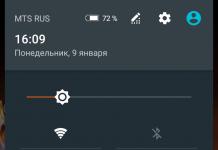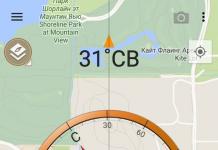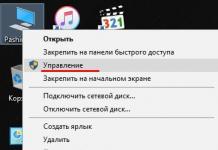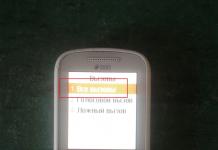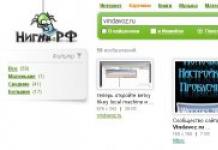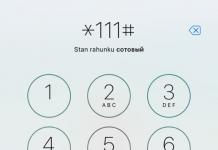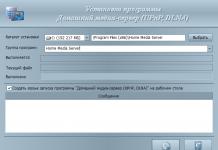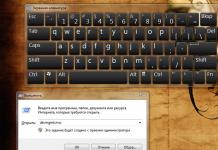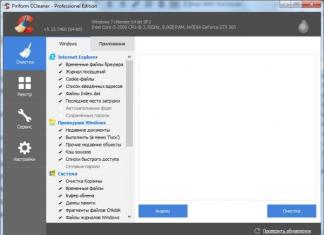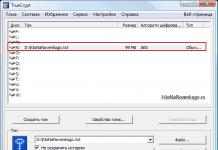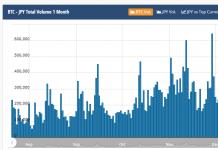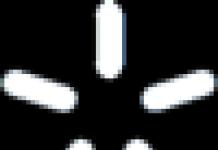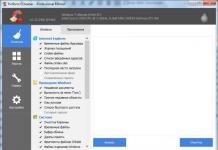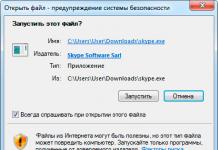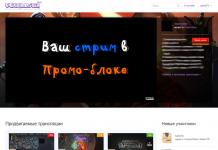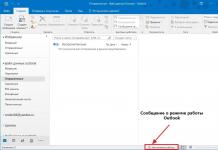Всем привет. Итак, мы изучили несколько элементов для создания форм. Пришло время объединить наши знания для решения задачи побольше. Давайте создадим самую простую форму для авторизации на сайте. Для этого нам необходимы два поля, делаем и привязываем к ним подписи.
Первое поле – для логина, второе – для пароля. И вот со вторым не все так просто. Поскольку на текущий момент оно представляет собой просто поле для ввода текста.
Результат в браузере:
Чтобы введенный в нем текст заменялся на звездочки, как это принято для поля такого типа, необходимо сделать одно простое действие. А именно, осуществить замену значения атрибута type на password :
Результат:
Кнопка отправки формы
Ну, вот. Наша форма уже почти готова. Теперь, чтобы завершить ее создание, необходимо сделать кнопку, которой будет осуществляться отправка формы. Задача решается с применением тега с типом submit .
Если на кнопке должна присутствовать какая-то надпись, то ее можно сделать, используя атрибут value . Задавать имя кнопке или нет – на ваше усмотрение, то если вы это сделаете, то сервер будет получать это имя, а также значение кнопки.
Как правило, в имени кнопки отправки формы есть потребность тогда, когда у формы есть несколько кнопок, каждая из которых выполняет определенное действие. Благодаря этому сервер, получая от браузера имя и значение кнопки, понимает, на какую именно кнопку нажал пользователь и что, соответственно, необходимо выполнить.
В итоге код нашей формы получится следующим:
Результат в браузере:
Здравствуй, дорогой хабрадруг! В этом туториале мы научимся создавать две формы HTML5: форма входа и форма регистрации. Эти формы будут меняться друг с другом местами с помощью псевдо-класса CSS3 :target . Мы будем использовать CSS3 и шрифт с иконками. Идея этого демо в том, чтобы показать пользователю форму входа и предоставить ему ссылку “перехода” к форме регистрации.
В этом туториале я подробно расскажу о том, как создавать эффект как в Демо 1 .
HTML
Здесь мы использовали несколько приемов HTML5. Например, элемент type=password автоматически скрывает то, что пользователь печатает и заменяет символы точками или звездочками (зависит от браузера). Элемент type=email позволяет браузеру проверить правильность формата email адреса. Кроме того, мы использовали параметр require=required ; браузеры, поддерживающие данный параметр не позволят пользователю отправить форму до тех пор, пока поле не заполнено, JavaScript здесь не требуется. Параметр autocomplete=on будет автоматически заполнять некоторые поля. Мы также использовали замещающийся текст, который поможет пользователю при заполнении формы.
Теперь о двух хитрых моментах. Вы наверное заметили две ссылки в начале формы. Этот ловкий прием позволит нашей формы вести себя правильно при работе с якорями (anchors).
Второй момент связан с применением шрифта с иконками. Мы будем использовать data-attribute , чтобы отобразить иконки. Устанавливая параметр data-icon=”icon_character” с соответствующим символов в HTML, мы должны назначить лишь одно правило в CSS для установления стиля всех иконок. Подробнее об этом приеме можно почитать на сайте: 24 Ways: Displaying Icons with Fonts and Data- Attributes .
CSS
Для чистоты кода я пропущу базовые параметры (html, body и т.п.), но вы сможете найти их в исходных файлах. Повторяю, что я использую приемы CSS3, которые не будут работать во всех браузерах. Итак, давайте же приступим!Стилизуем формы, используя CSS3
Во-первых, давайте назначим нашим формам базовый стиль.#subscribe, #login{ position: absolute; top: 0px; width: 88%; padding: 18px 6% 60px 6%; margin: 0 0 35px 0; background: rgb(247, 247, 247); border: 1px solid rgba(147, 184, 189,0.8); box-shadow: 0pt 2px 5px rgba(105, 108, 109, 0.7), 0px 0px 8px 5px rgba(208, 223, 226, 0.4) inset; border-radius: 5px; } #login{ z-index: 22; }
Здесь мы назначим свойства для шапки:
/**** текст ****/ #wrapper h1{ font-size: 48px; color: rgb(6, 106, 117); padding: 2px 0 10px 0; font-family: "FranchiseRegular","Arial Narrow",Arial,sans-serif; font-weight: bold; text-align: center; padding-bottom: 30px; } /** На донный момент только webkit поддерживает background-clip:text; **/ #wrapper h1{ background: -webkit-repeating-linear-gradient(-45deg, rgb(18, 83, 93) , rgb(18, 83, 93) 20px, rgb(64, 111, 118) 20px, rgb(64, 111, 118) 40px, rgb(18, 83, 93) 40px); -webkit-text-fill-color: transparent; -webkit-background-clip: text; } #wrapper h1:after{ content:" "; display:block; width:100%; height:2px; margin-top:10px; background: linear-gradient(left, rgba(147,184,189,0) 0%, rgba(147,184,189,0.8) 20%, rgba(147,184,189,1) 53%, rgba(147,184,189,0.8) 79%, rgba(147,184,189,0) 100%); }
Замечу, что сегодня только браузеры с webkit поддерживают background-clip: text , поэтому мы сделаем полосатый фон только для webkit и привяжем его к заголовку H1. Так как параметр background-clip: text работает только в Webkit браузерах, я решил работать только со свойствами webkit. Именно поэтому я разделил CSS на две части и использовал только градиент webkit. Однако вы не должны использовать лишь webkit на своих вебсайтах! Так, например, параметр -webkit-text-fill-color: transparent позволяет нам иметь прозрачный фон, но только для браузеров webkit, все другие браузеры проигнорируют это свойство.
Мы также создали тонкую линию под заголовком с помощью элемента:after pseudo-class. Мы использовали градиент с 2px в высоту и уменьшили прозрачность по краям до нуля.
Теперь давайте позаботимся о полях ввода и придадим им приятный вид.
/**** advanced input styling ****/ /* placeholder */ ::-webkit-input-placeholder { color: rgb(190, 188, 188); font-style: italic; } input:-moz-placeholder, textarea:-moz-placeholder{ color: rgb(190, 188, 188); font-style: italic; } input { outline: none; }
Во-первых, мы стилизуем поля и уберем обводку. Но будьте осторожны: обводка помогает пользователю понять, на каком поле он находится. Если же вы уберете ее, то нужно применить свойства:active и:focus.
/* все поля исключают submit и checkbox */ #wrapper input:not(){ width: 92%; margin-top: 4px; padding: 10px 5px 10px 32px; border: 1px solid rgb(178, 178, 178); box-sizing: content-box; border-radius: 3px; box-shadow: 0px 1px 4px 0px rgba(168, 168, 168, 0.6) inset; transition: all 0.2s linear; } #wrapper input:not():active, #wrapper input:not():focus{ border: 1px solid rgba(91, 90, 90, 0.7); background: rgba(238, 236, 240, 0.2); box-shadow: 0px 1px 4px 0px rgba(168, 168, 168, 0.9) inset; }
Здесь мы использовали псевдо класс:not, чтобы стилизовать все поля, кроме чекбоксов. Кроме того, я решил убрать обводку и добавил свойства:focus и:active.
Теперь время веселиться: шрифт с иконками. Так как мы не можем использовать псевдо-классы:before и:after, мы добавим иконку в параметр label, а затем разместим в поле. Я буду использовать библиотеку fontomas . Вы можете сами сопоставить иконки с соответствующей буквой. Помните атрибут data-icon ? Именно в него нужно вставить букву. Я использовал data-icon=’u’ для логина, ‘e’ для email, ‘p’ для пароля. Как только я выбрал буквы, я скачал шрифт и использовал генератор шрифтов fontsquirrel для конвертации в формат, пригодный для @font-face.
@font-face { font-family: "FontomasCustomRegular"; src: url("fonts/fontomas-webfont.eot"); src: url("fonts/fontomas-webfont.eot?#iefix") format("embedded-opentype"), url("fonts/fontomas-webfont.woff") format("woff"), url("fonts/fontomas-webfont.ttf") format("truetype"), url("fonts/fontomas-webfont.svg#FontomasCustomRegular") format("svg"); font-weight: normal; font-style: normal; } /** магический трюк! **/ :after { content: attr(data-icon); font-family: "FontomasCustomRegular"; color: rgb(106, 159, 171); position: absolute; left: 10px; top: 35px; width: 30px; }
Вот собственно и все. Вам не требуется иметь отдельный класс для каждой иконки. Мы использовали параметр content: attr(data-icon) , чтобы получить букву из атрибута data-icon. Таким образом, нам нужно лишь назначить шрифт, выбрать цвет и разместить иконку.
Теперь назначим правила для кнопки отправки формы.
/*стилизуем обе кнопки*/ #wrapper p.button input{ width: 30%; cursor: pointer; background: rgb(61, 157, 179); padding: 8px 5px; font-family: "BebasNeueRegular","Arial Narrow",Arial,sans-serif; color: #fff; font-size: 24px; border: 1px solid rgb(28, 108, 122); margin-bottom: 10px; text-shadow: 0 1px 1px rgba(0, 0, 0, 0.5); border-radius: 3px; box-shadow: 0px 1px 6px 4px rgba(0, 0, 0, 0.07) inset, 0px 0px 0px 3px rgb(254, 254, 254), 0px 5px 3px 3px rgb(210, 210, 210); transition: all 0.2s linear; } #wrapper p.button input:hover{ background: rgb(74, 179, 198); } #wrapper p.button input:active, #wrapper p.button input:focus{ background: rgb(40, 137, 154); position: relative; top: 1px; border: 1px solid rgb(12, 76, 87); box-shadow: 0px 1px 6px 4px rgba(0, 0, 0, 0.2) inset; } p.login.button, p.signin.button{ text-align: right; margin: 5px 0; }
Трюк заключается в том, чтобы использовать box-shadow, чтобы создать несколько рамок. Естественно, вы можете использовать лишь одну рамку, но также можно и несколько. Мы будем использовать параметр length для создания “фейковой” второй белой рамки, 3px в ширину, без размытия.
Теперь стилизуем чекбокс, здесь мы ничего необычного не сотворим:
/* стилизуем чекбокс "запомнить меня"*/ .keeplogin{ margin-top: -5px; } .keeplogin input, .keeplogin label{ display: inline-block; font-size: 12px; font-style: italic; } .keeplogin input#loginkeeping{ margin-right: 5px; } .keeplogin label{ width: 80%; }
Стилизуем подвал формы, используя множественные линейные градиенты, чтобы создать полосатый градиент.
P.change_link{ position: absolute; color: rgb(127, 124, 124); left: 0px; height: 20px; width: 440px; padding: 17px 30px 20px 30px; font-size: 16px ; text-align: right; border-top: 1px solid rgb(219, 229, 232); border-radius: 0 0 5px 5px; background: rgb(225, 234, 235); background: repeating-linear-gradient(-45deg, rgb(247, 247, 247) , rgb(247, 247, 247) 15px, rgb(225, 234, 235) 15px, rgb(225, 234, 235) 30px, rgb(247, 247, 247) 30px); } #wrapper p.change_link a { display: inline-block; font-weight: bold; background: rgb(247, 248, 241); padding: 2px 6px; color: rgb(29, 162, 193); margin-left: 10px; text-decoration: none; border-radius: 4px; border: 1px solid rgb(203, 213, 214); transition: all 0.4s linear; } #wrapper p.change_link a:hover { color: rgb(57, 191, 215); background: rgb(247, 247, 247); border: 1px solid rgb(74, 179, 198); } #wrapper p.change_link a:active{ position: relative; top: 1px; }
Сейчас вы видите, что у нас две приятные формы, но ведь мы хотим, чтобы отображалась только лишь одна из них. Пришло время анимации!
Создаем анимацию
Первое, что мы сделаем, мы спрячем вторую форму, назначив opacity на 0:#register{ z-index: 21; opacity: 0; }
Помните, что форма входа имеет параметр z-index: 22? Второй форме мы назначим этот параметр на 21, чтобы поставить его “под” форму входа.
Теперь самое интересное: меняем формы местами, используя псевдо класс:target. Вам нужно понять одну вещь по поводу:target: для перемещения мы будем использовать якоря. Нормальное поведение якоря - прыжок на определенный элемент страницы. Но мы не хотим этого, мы лишь хотим поменять формы местами. И тут приходит на помощь наш трюк с использованием двух ссылок в начале страницы. Вместо того, чтобы направить нас прямо на вторую форму, рискуя испытать эффект “прыжка”, мы придадим ссылкам параметр display: none . Это поможет избежать прыжков. Я обнаружил этот трюк на сайте: CSS3 create (французский язык).
#toregister:target ~ #wrapper #register, #tologin:target ~ #wrapper #login{ z-index: 22; animation-name: fadeInLeft; animation-delay: .1s; }
Вот, что происходит: когда мы кликаем на кнопку Присоединиться
, мы направляемся на #toregister. Затем происходит анимация и лишь потом переходим на элемент #register. Мы используем анимацию под названием fadeInLeft
. Так как мы “прячем” форму, используя нулевую прозрачность, мы применим анимацию, которая будем постепенно появляться. Мы также изменили z-index, чтобы она появилась поверх другой формы. То же самое происходит для другой формы same happens for the other form.
Вот код для анимации. Мы использовали CSS3 animation framework от Dan Eden и адаптировали этот фреймворк под наш туториал.
Animate{ animation-duration: 0.5s; animation-timing-function: ease; animation-fill-mode: both; } @keyframes fadeInLeft { 0% { opacity: 0; transform: translateX(-20px); } 100% { opacity: 1; transform: translateX(0); } }
Форма, которая “исчезает”, будет иметь анимацию затемнения влево:
#toregister:target ~ #wrapper #login, #tologin:target ~ #wrapper #register{ animation-name: fadeOutLeftBig; } @keyframes fadeOutLeft { 0% { opacity: 1; transform: translateX(0); } 100% { opacity: 0; transform: translateX(-20px); } }
Теперь вы можете использовать другие анимации от Dan Eden’ с помощью файла animate.css: просто измените класс.animate class и названия анимаций. Вы также обнаружите несколько других анимаций в конце файла animate-custom.css file.
Вот и все, друзья. Надеюсь вам понравился этот туториал!
Заметим, что в некоторых браузерах параметр background-clip: text не поддерживается. В Internet Explorer 9 анимации не работают. В Internet Explorer 8 и ниже псевдо-класс:target pseudo-class не поддерживается, поэтому там этот эффект вообще работать не будет.
P.S. Все замечания по поводу перевода с удовольствием приму в личку. Спасибо!
Теги: Добавить метки
We will style it using CSS3 and an icon font. The idea behind this demo is to show the user the login form and provide a link to “switch” to the registration form.
Note that this is for demo purpose only, it will only work in browser supporting the:target pseudo class, and you should not use this code on a live website without providing solid fallback.
In the following, we will be going through Demo 1.
The HTML
In the HTML, we will put both forms, hiding the second one with CSS. Here is the code, I’ll explain some of the interesting parts later.
We’ve added some HTML5 goodness here and used some of the new inputs. The input type=password
automatically hides what the user is typing and replaces it with dots (depending on browser). The input type=email
enables the browser to check if what the user entered has the format of a valid email address. We’ve also used the require=required
attribute; browsers that support this attribute will not let the user submit the form until this field is filled, no JavaScript required.
The autocomplete=on
attribute will prefill values based on earlier user input. We also used some nice placeholders for the inputs that will show some guiding value when the input is not filled.
Now the two tricky parts. You might have noticed the two links at the top of the form. This is a little trick that will make our form behave nicely when playing with anchors, so that it won’t “jump” on long pages when we click on the switching link and trigger the:target pseudo-class.
The second little trick is related to the use of the icon font. We will be using a data-attribute to display the icons. By setting data-icon=”icon_character” with the according character in the HTML we will just need one CSS attribute selector to style all the icons. Read more about this technique on 24 Ways: Displaying Icons with Fonts and Data- Attributes .
The CSS
For the clearness of the code in this tutorial, I will omit all the vendor prefixes, but you will, of course, find them in the files. Once again, I’m using some pretty advanced CSS3 tricks that might not work in all browsers. Let’s get started.
Styling both forms using CSS3
First, let’s give our two forms some general styling for the container.
#subscribe, #login{ position: absolute; top: 0px; width: 88%; padding: 18px 6% 60px 6%; margin: 0 0 35px 0; background: rgb(247, 247, 247); border: 1px solid rgba(147, 184, 189,0.8); box-shadow: 0pt 2px 5px rgba(105, 108, 109, 0.7), 0px 0px 8px 5px rgba(208, 223, 226, 0.4) inset; border-radius: 5px; } #login{ z-index: 22; }
We’ve added a nice box shadow that’s made of two shadows: an inset one to create the inner blue glow, and an outside shadow. We’ll explain the z-index in a bit.
In the following we will style the header with some background clipping:
/**** general text styling ****/ #wrapper h1{ font-size: 48px; color: rgb(6, 106, 117); padding: 2px 0 10px 0; font-family: "FranchiseRegular","Arial Narrow",Arial,sans-serif; font-weight: bold; text-align: center; padding-bottom: 30px; } /** For the moment only webkit supports the background-clip:text; */ #wrapper h1{ background: -webkit-repeating-linear-gradient(-45deg, rgb(18, 83, 93) , rgb(18, 83, 93) 20px, rgb(64, 111, 118) 20px, rgb(64, 111, 118) 40px, rgb(18, 83, 93) 40px); -webkit-text-fill-color: transparent; -webkit-background-clip: text; } #wrapper h1:after{ content:" "; display:block; width:100%; height:2px; margin-top:10px; background: linear-gradient(left, rgba(147,184,189,0) 0%, rgba(147,184,189,0.8) 20%, rgba(147,184,189,1) 53%, rgba(147,184,189,0.8) 79%, rgba(147,184,189,0) 100%); }
Note that at this moment only webkit browsers support background-clip: text , so we will create a stripped background only for webkit here, and clip it to the text to add the stripes to the H1 title. Since the background-clip: text property currently only works in Webkit browsers, I decided to go only with the webkit prefix. That’s the reason why I split the CSS declaration into two parts, and use a webkit prefixed gradient only. Only using the –webkit- prefix is bad practice, it’s only for demo purpose, and you should never do this on real a website! That’s also where the -webkit-text-fill-color: transparent comes in handy: it enables us to only have a transparent background on the webkit browsers, all the other ones will ignore it and give us the provided text color fallback.
We also created a fading line under the title with the help of the:after pseudo-class. We use a 2px height gradient and fade the background to 0 opacity at both ends.
Now let’s style our inputs and give them a nicer look.
/**** advanced input styling ****/ /* placeholder */ ::-webkit-input-placeholder { color: rgb(190, 188, 188); font-style: italic; } input:-moz-placeholder, textarea:-moz-placeholder{ color: rgb(190, 188, 188); font-style: italic; } input { outline: none; }
First we style the inputs, and remove the outline. But be careful here; the outline helps the user know which input is focused, so if you remove it, you should provide some:active and:focus states for the inputs.
/* all the input except submit and checkbox */ #wrapper input:not(){ width: 92%; margin-top: 4px; padding: 10px 5px 10px 32px; border: 1px solid rgb(178, 178, 178); box-sizing: content-box; border-radius: 3px; box-shadow: 0px 1px 4px 0px rgba(168, 168, 168, 0.6) inset; transition: all 0.2s linear; } #wrapper input:not():active, #wrapper input:not():focus{ border: 1px solid rgba(91, 90, 90, 0.7); background: rgba(238, 236, 240, 0.2); box-shadow: 0px 1px 4px 0px rgba(168, 168, 168, 0.9) inset; }
Here we used the:not pseudo class, to style all inputs, except the checkbox. I provided a:focus and:active state, since I decided to remove the outline.
And now the fun part: the icon font. Since we can’t use:before and:after pseudo classes on inputs, we’ll have to cheat a little bit: we’ll add the icon to the label, and then place it in the input. I’m using the fontomas library which puts together some nice icons. You can rearrange them to set the icon to a specific letter. Remember the data-icon attribute? It’s where you should put the letter. I used data-icon=’u’ for user, ‘e’ for email, ‘p’ for password. Once I chose the letters, I downloaded the font, and used the fontsquirrel font generator to transform it into a @font-face compatible format.
@font-face { font-family: "FontomasCustomRegular"; src: url("fonts/fontomas-webfont.eot"); src: url("fonts/fontomas-webfont.eot?#iefix") format("embedded-opentype"), url("fonts/fontomas-webfont.woff") format("woff"), url("fonts/fontomas-webfont.ttf") format("truetype"), url("fonts/fontomas-webfont.svg#FontomasCustomRegular") format("svg"); font-weight: normal; font-style: normal; } /** the magic icon trick ! **/ :after { content: attr(data-icon); font-family: "FontomasCustomRegular"; color: rgb(106, 159, 171); position: absolute; left: 10px; top: 35px; width: 30px; }
Yeah, that’s it folks, you don’t need to have a class for each icon. We used content: attr(data-icon) to retrieve the letter from the data-icon attribute, so we only have to declare the font, choose a nice color and position it.
Now let’s style the submit button for both forms.
/*styling both submit buttons */ #wrapper p.button input{ width: 30%; cursor: pointer; background: rgb(61, 157, 179); padding: 8px 5px; font-family: "BebasNeueRegular","Arial Narrow",Arial,sans-serif; color: #fff; font-size: 24px; border: 1px solid rgb(28, 108, 122); margin-bottom: 10px; text-shadow: 0 1px 1px rgba(0, 0, 0, 0.5); border-radius: 3px; box-shadow: 0px 1px 6px 4px rgba(0, 0, 0, 0.07) inset, 0px 0px 0px 3px rgb(254, 254, 254), 0px 5px 3px 3px rgb(210, 210, 210); transition: all 0.2s linear; } #wrapper p.button input:hover{ background: rgb(74, 179, 198); } #wrapper p.button input:active, #wrapper p.button input:focus{ background: rgb(40, 137, 154); position: relative; top: 1px; border: 1px solid rgb(12, 76, 87); box-shadow: 0px 1px 6px 4px rgba(0, 0, 0, 0.2) inset; } p.login.button, p.signin.button{ text-align: right; margin: 5px 0; }
The trick here is to use the box-shadow in order to create some extra borders. You can only use one border, but as many box-shadows as you want. We will use the length value to create a “fake” second white border, 3px wide, with no blur.
Then we’ll style the checkbox, nothing very special here:
/* styling the checkbox "keep me logged in"*/ .keeplogin{ margin-top: -5px; } .keeplogin input, .keeplogin label{ display: inline-block; font-size: 12px; font-style: italic; } .keeplogin input#loginkeeping{ margin-right: 5px; } .keeplogin label{ width: 80%; }
We will style the bottom of the form using repeating linear gradients to create a striped background.
P.change_link{ position: absolute; color: rgb(127, 124, 124); left: 0px; height: 20px; width: 440px; padding: 17px 30px 20px 30px; font-size: 16px ; text-align: right; border-top: 1px solid rgb(219, 229, 232); border-radius: 0 0 5px 5px; background: rgb(225, 234, 235); background: repeating-linear-gradient(-45deg, rgb(247, 247, 247) , rgb(247, 247, 247) 15px, rgb(225, 234, 235) 15px, rgb(225, 234, 235) 30px, rgb(247, 247, 247) 30px); } #wrapper p.change_link a { display: inline-block; font-weight: bold; background: rgb(247, 248, 241); padding: 2px 6px; color: rgb(29, 162, 193); margin-left: 10px; text-decoration: none; border-radius: 4px; border: 1px solid rgb(203, 213, 214); transition: all 0.4s linear; } #wrapper p.change_link a:hover { color: rgb(57, 191, 215); background: rgb(247, 247, 247); border: 1px solid rgb(74, 179, 198); } #wrapper p.change_link a:active{ position: relative; top: 1px; }
Now you’ll notice that we’ve got two nice forms, but we really want only one to show at a time. So now is time for some animations!!
Creating the switching animation
The first thing to do is to hide the second form by setting the opacity to 0:
#register{ z-index: 21; opacity: 0; }
Remember that our login form had a z-index of 22? We will give the second form a z-index of 21, to put it “under” the login form.
And now the really good part: switching the forms using the:target pseudo class. What you really have to understand about:target, is that we will use anchors to make the transition. The normal behavior of an anchor link, is to jump to the target in the page. But we don’t want to jump anywhere, we only want to switch the forms. And here comes our trick using the two links at the top of the page. Instead of directly linking to the second form, and risking getting a “jumping” effect, we actually put the two links at the top of the page and give them display: none . This will avoid any page jump. Credit where credit’s due: I found this trick on CSS3 create (in French).
#toregister:target ~ #wrapper #register, #tologin:target ~ #wrapper #login{ z-index: 22; animation-name: fadeInLeft; animation-delay: .1s; }
So this is what happens: when we click on the Join us
button, we trigger the #toregister. We then do the animation, by using the sibling selector ~ to find our #register element. We use an animation called fadeInLeft
. Since we “hide” the form using zero opacity, we will use an animation that fades in, to make it appear. We’ve also changed the z-index, to make it appear on top of the other form.
The same happens for the other form.
And here is the code for the animation. We are using the CSS3 animation framework from Dan Eden and adapted it for this tutorial.
Animate{ animation-duration: 0.5s; animation-timing-function: ease; animation-fill-mode: both; } @keyframes fadeInLeft { 0% { opacity: 0; transform: translateX(-20px); } 100% { opacity: 1; transform: translateX(0); } }
The form that is “disappearing” will have another animation which will make it fade out to the left:
#toregister:target ~ #wrapper #login, #tologin:target ~ #wrapper #register{ animation-name: fadeOutLeftBig; } @keyframes fadeOutLeft { 0% { opacity: 1; transform: translateX(0); } 100% { opacity: 0; transform: translateX(-20px); } }
You can now use other animations from Dan Eden’s animate.css: just adjust your .animate class and replace the animation names. You will also find some custom animations at the end of the animate-custom.css file.
Well, that’s it folks. I hope you enjoyed the tutorial!
Please note, that in some browsers background-clip: text is not supported. In Internet Explorer 9 the transitions and animations don’t work, so there will be no fancy form switching. In Internet Explorer 8 and below the:target pseudo-class is not supported, so it won’t work at all (you’ll just see the login form).
Do you have a website? If your answer to this question is yes
,
then a classic must have is an attractive login form. Be it a social networking site or an online fashion store, an email site or an online magazine, the first thing that catches the eye of the customer is the login option. So, why not let your customer get the desired impression in the first contact. Download and get the look for your website that creates an everlasting first impression.
Helpful Articles:
HTML5 Tutorial – Creating Easy HTML Login Form using CSS!
White Transparent HTML Login Form Template
Login Form – Orange Skin Type is an easy to use login form template with its PSD ready to be converted into CSS. It comes with various styles for buttons and is highly customizable.
Basic Login Form Template Free HTML

8 Modern & Web 2.0 Login/Signup Panels is a set of login forms with a futuristic feel to it with quirky and out of the box designs. These forms come in layered PSDs and are highly editable. Source: codepen.io
Black Skin HTML Login Form Template

With sleek and smart design, Modern Login & Register Forms looks very appealing. The smart objects and shapes in the PSD are easily editable making this template highly flexible and adjustable to your needs.

Day/Night Login Page is a very charming HTML login template that comes in two variations. Brightly colored buttons against a dark or a white background are very eye catchy and this template is easily editable.
Login / Registration Form with Password Meter

This template comes with password meter and features a perfectly transparent layout with minimal designing effects. They feature a pinkish shade for the background. They come with a customizable login page. The design is based on single PSD layer that makes it easily editable. The texts are also editable and come with Google Web Fonts.
Batman Styled Dark CSS3 Login Form Download

With darker appearance, this designer template features perfectly editable CSS3 login form with simplistic design. Perfectly responsive, this template work finer in any device, mobile or desktop. It is printable and can be customized as per the requirement. A niche login form design, this template is perfect to be used for corporate and professional WordPress sites.
Simple HTML5 Login Form Sample Source Code

These forms are perfectly responsive and assures easy, with simple nice layout. They also have a darker background with white login form to start with. This template is best for including and contact pages in websites. Their appearance makes them perfectly apt for any website settings. It is fully editable.
8 Modern HTML Login Signup Panels

With an extremely niche layout, this template features 8 modern HTML based signup panels. It has a white layout with very unique designing structures integrated perfectly to create amazing effects for login forms. It is totally responsive and can be edited as per requirement. It is perfect for commercial as well blog sites.

Absolutely simple and basic template files, they can be easily customized and promises to be browser friendly. The template works absolutely fine with any device, big or small, laptop or tablet, smart phone or desktop. It features easy login page in html option. Google Login tool has been integrated. Access Google account using email and password.
How to Use Custom Login Form in Your Website
Creating a custom login form for your WordPress website is quite easy with the latest themes and templates. These are fully customizable and editable. Now edit the login logo to make it more attractive. Replace the logo with your brand icon. It helps in the branding part and depicts a clear message the visitors. There are several plugins available that help in creating customized login form for your website. These plugins are easy to install and helps in providing the most innovative login pages that promises fully editable and responsive for your website. Using custom login form in your website just gets easier.
How to Design / Create Login Form in HTML
It is really important to business to have a nice and creative login form. This is the first point of contact for many customers and hence a lot of efforts should go in creating a perfect design login form. It is possible to code the entire webpage in HTML and there are also Free HTML5 & CSS3 Login Forms Downloads that are available on the web. These templates can be used with little modification and it saves a lot of time and efforts while designing any page. Some may prefer using the paid templates for the web designing and others may simply resort to creating it from scratch.
HTML Day, Night Login Page Template

Very unique login page with day night settings, this template are fully responsive and promises cross browser compatibility. It is perfectly niche in terms of design layouts and button configurations. It comes with several social login options through twitter, Facebook, and Google+. This template feature sample forms that can be easily customizable.
Horizontal Responsive Login Form UI Design

This template features a horizontal layout and promises to be 100% responsive which makes them perfectly accessible to desktops as well smartphone devices. It can be customized without any problem. It comes with a cool sky blue layout, comprising of dropdown and radio buttons. It is perfectly apt for personal registration forms and blog sites.
Beautiful Login Form with New HTML5 Attributes

With minimalistic and simple designing interface, this template login form is perfect for modern day websites. This template feature layered PSD files and comes with easy customizable features. There are wide ranges of HTML5 attributes that makes it so special and unique. It is perfectly compatible with mobile devices like smartphone and tablets. you may also see .
HTML Coded Login Form Template

Source: premiumfreebies.eu | This HTML template has simple interface and comes with minimalistic designing layout. It is compatible with different browsers and offer easy and fast loading. It promises to be printer friendly. Some of the features include Google web fonts, sliced PSD, dropdown menu, customizable color theme, favicon, and social sharing options.
Dark HTML Login Form Template

This template features quite a darker appearance. But it has a sober and niche layout that promises to offer easy navigation through the sections. 100% responsive and can be customized easily, this template are best suited for entertainment and magazine portals. It is feature rich and easy on the eyes.
Beautiful CSS3 Login Form Template

This is a very elegantly designed and niche templates for forms and login pages. The registration form template html css free download is responsive and works perfectly fine with any browser, be it IE, Chrome, or Safari. It has a retina ready display and promises to offer smooth navigation. It feature social sharing options installed at the home page.
Clean Design HTML Login Page

Extremely niche layout, this template has dark shades with social sharing options integrated at the home page. Fully customizable, this template can work easily with any browser and device. It features dropdown menu and password remember button. It also offers fast loading option and promises to be printer friendly. It comes with editable coding files.
HTML & CSS Login Form Template Using Asp.Net
 Some programmers also use C# language for creating the HTML Login Page. The programming language offers a lot of versatility to the programmers and it is also easy to compile the login form with help of C#.
Some programmers also use C# language for creating the HTML Login Page. The programming language offers a lot of versatility to the programmers and it is also easy to compile the login form with help of C#.
JQuery Mobile Login Form Wedget Template

Admin Login/Sign in Form with PHP Template

Share
Have you minutely ever followed the login page that appears when you sign up for a particular website? The first page that comes up whenever you are logging in is the first impression of a website. The design of the login form will itself define the nature of the website and hence it should carry pertinence with the website it is leading to.
Truly, login or signup forms are one of the most important elements that a web page contains and hence designing these online forms is one of the most significant features when it comes to designing the website. A successfully created sign up form also encourages as well as allows the visitors to becoming a member, a subscriber or a customer for a particular business. A sober-looking, creative as well as visually attractive signup form will surely encourage a fruitful rate of conversion of a visitor if all the other features are properly coordinated.
Designing an effective as well as clean login/signup form asks for a lot of creativity from the designer as it is important for a website to have an appealing & outstanding form for the sake of its success and efficacy.
Some highly effective and attractive login form designs
There are some registration forms which consist of basic that are created with the help of some elementary web designing concepts. Apart from these elementary ones, there are few which may look a bit different o some extent. However, there are some others which are extremely impressive as well as creative that categorically lures the visitor to enter the website.
Some of these forms have an option of entering personal contact information in details and they include the name, e-mail, contact number and other things . The styles of these forms go much beyond ordinary, and some of them even have come up with an option of handwritten calligraphy.
Few login pages come up with various innovative input style of text beside some highly innovative option or select menus. These types of forms really ask for a high level of creativity from the designers, especially when it comes to designing the space in between various layers, creating texts that are large and easily readable, and creating the sidebar links that connect to their e-mails directly.
A specific type of form provides a dramatic insight of a new data input field. The users have the leverage of getting to the login link from the homepage itself and call up a login box powered by jQuery. This particular type of form comes up with an Ajax that it uses to direct an external script of PHP. It evaluates the information that a user has used in logging in and once processed, it either grants the permission to the user or denies it.
A number of login form designs that we see these days are indeed extremely dynamic and consist of some of the very latest designs. One of these new age designs provides a wonderful insight into the various data input fields. Users can easily go to the homepage and can click the link on the login page to call up a dynamic login box powered by jQuery. This particular login form comes up with the option of linking an external PHP script that helps in evaluation of various login information and depending upon the outcome of the result; it either allows entry of the user or denies it.
Login Form Examples
Login Form from Impressionist UI by Designmodo
Although, at first sight, it seems that inputs slightly soar in the air, since gradients and vector realization placed on a textured canvas leads to a slight balanced in harmony. Nevertheless, this tooltip-inspired basic login form looks interesting and unique.
Login by Haziq Mir
The designer places fields in line, making the overall component suitable for standard relatively narrow headers. While soft, warm brownish coloring paired with inner shadows give each item pleasant, smooth and finished appearance, the dark version has a more sophisticated look.
Stellar Login, Improved by Haziq Mir
The first thing that catches the eye is a background that can become an excellent complement to any intricate or illustrative design, where natural textures such as wood or paper run the show. While sleek inputs and grayish coloring ideally suit to the notebook-styled canvas, the huge blue ‘Sign In’ button grabs the whole attention with its great visual weight.
Login Form by Sergey Shmidt
This is an excellent example of a dark login form that exudes an image of sophistication without being brutal. The glossy brown button instantly strikes the eye, calling to action. Tiny metallic toggle adds a lovely skeuomorphic flair to the composition.
Login form for personal application by Ionut Zamfir
The backdrop of the form mimics a common notebook surface where we usually make notes. Wooden canvas enhances the overall aesthetics. Although shiny gradient buttons slightly break away from the theme, here flat or sketchy buttons might look more natural, yet still the component achieves a sense of harmony.
Sign In Widget
The designer exhibits a subtle and elegant web form, the wow factor of which is produced by its semi-transparent background. It has an optimal contrast that sets apart lettering and icons from the backdrop, and as usual, massive almost overwhelming bulging CTA.
iPhone App Login Form
iPhone App Login Form by Mason Yarnell is executed in the best traditions of iOS designs of previous years. There are lots of glossy stuff, ornamental ribbons, embossed icons and, of course, complicated textured backdrop. Nevertheless, in general, the component looks clean, fresh and with lots of air.
Light login by Maxwell Barvian
Light login by Maxwell Barvian looks exactly as stated on the nameplate: light, clean and crisp. Grey and white colors together can do wonders easily providing users with an excellent experience. As befits, for better conversions, the main button is intentionally oversized and is painted in a bright tone.
How to Create Login Form with CSS3 and jQuery
It is a small tutorial that is subservient even to novice web developers. Although the design is quite simple and input fields at first look like buttons because of a gradient styling; however, it is a representative example of sleek and well-structured web form that can come in handy in numerous UIs.
Login by Paresh Khatri
Some login by Paresh Khatri is a tiny web component that boasts of a vibrant color scheme and meticulous attention to details. The tooltip-inspired shape, circular photo thumbnail, inset treatment, semi-transparent backdrop make this design easily stand out from the crowd.
App Login
Carefully laying out each element of the form one above the other, Mynus is managed to tie the design together and ditch the backdrop that would only distract attention from a refined screen. The coloring, edges, shapes, rounded corners, typography, amount of white space and embossed touches make the design unique and crisp.
Dark login by Adam Whitcroft
Dark login by Adam Whitcroft looks sophisticated and top-notch. An excellent choice of font in tandem with contrasting colors offers users an optimal readability. ‘Sign In’ button, grayish glyphs and switch look a bit seamless, yet they ideally blend in the environment.
User login
User login has a warm creamy coloring that evokes positive feelings. Orange and blue are used as decorative touches that add a zest and make the form suitable for various designs. Gradient-based CTA with a convex appearance simply jumps at you, inviting to action.
Snappy Login by Charlie Waite
Snappy Login by Charlie Waite is an interesting take on a web form that has a simple yet original appearance mainly thanks to flat transparent inputs. Although text inside fields experiences some illegibility, when the backdrop is too washy, yet on the whole, it certainly has a charm. The decorative font and embossed button look exceptional, and as it should be, an attention-grabbing.
Sazzi Login by Ionut Zamfir
Sazzi Login by Ionut Zamfir features a nice twist produced by the CTA buttons. The primary coloring is neatly selected, and the accent tone perfectly complements the overall aesthetics. The form looks great on a monotone or noisy canvases, especially input fields that seem to be naturally inbuilt.
Notepad Login final by Haziq Mir
Notepad Login final by Haziq Mir is another illustrative take on a common minimalistic form in our collection that is planned down to the last detail. The background holds the theme together, original dashed-styled fields and elegant cursive typography have artistic flair.
Stacked Paper login by Patrik Larsson
The author goes for a more traditional route by using clean backdrop, standard boxes for inputs, regular type, and calm color palette. Here red is used for accent, giving the CTA a striking appearance. Tiny details as a metallic clip as well as wooden texture just enrich the aesthetics.


